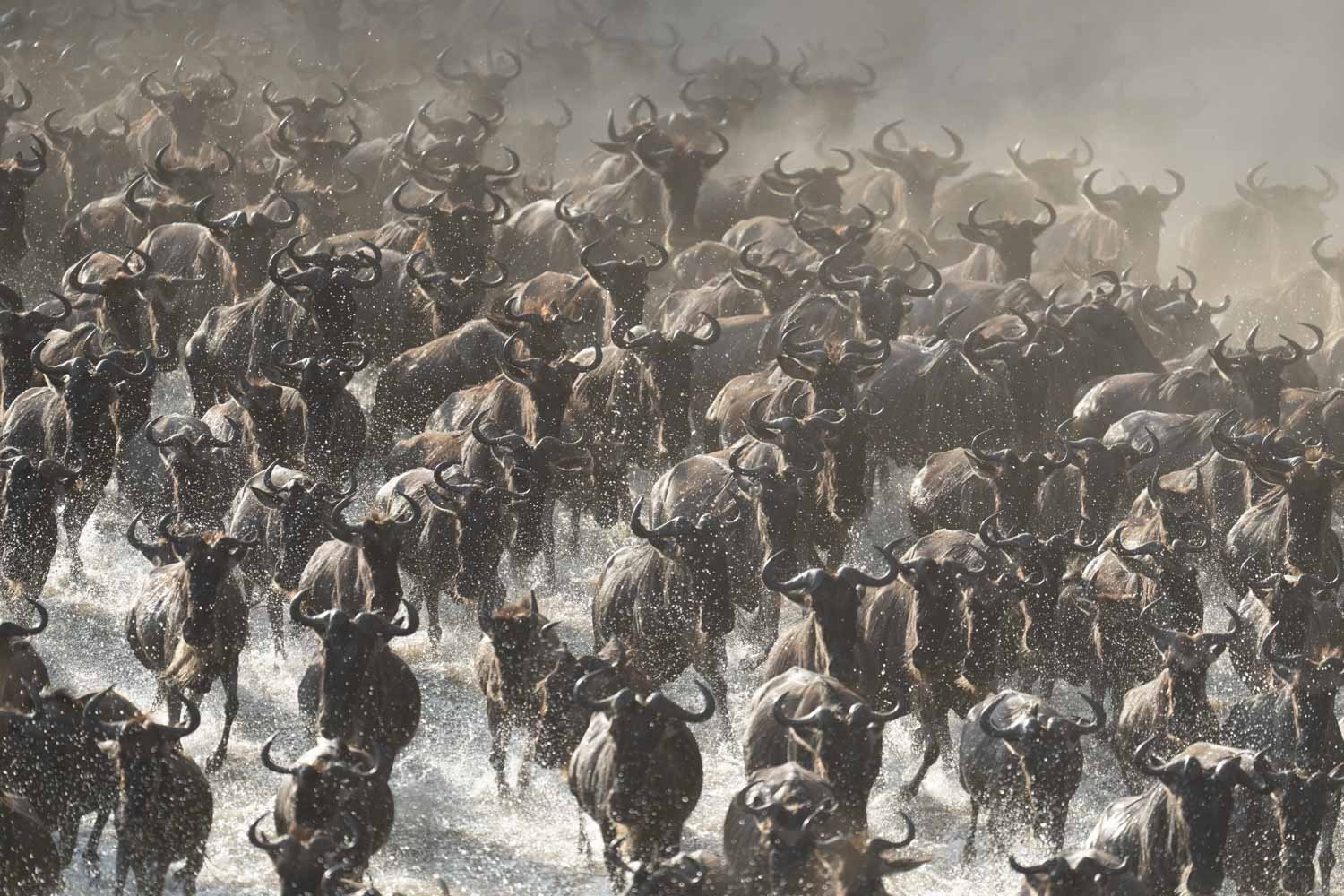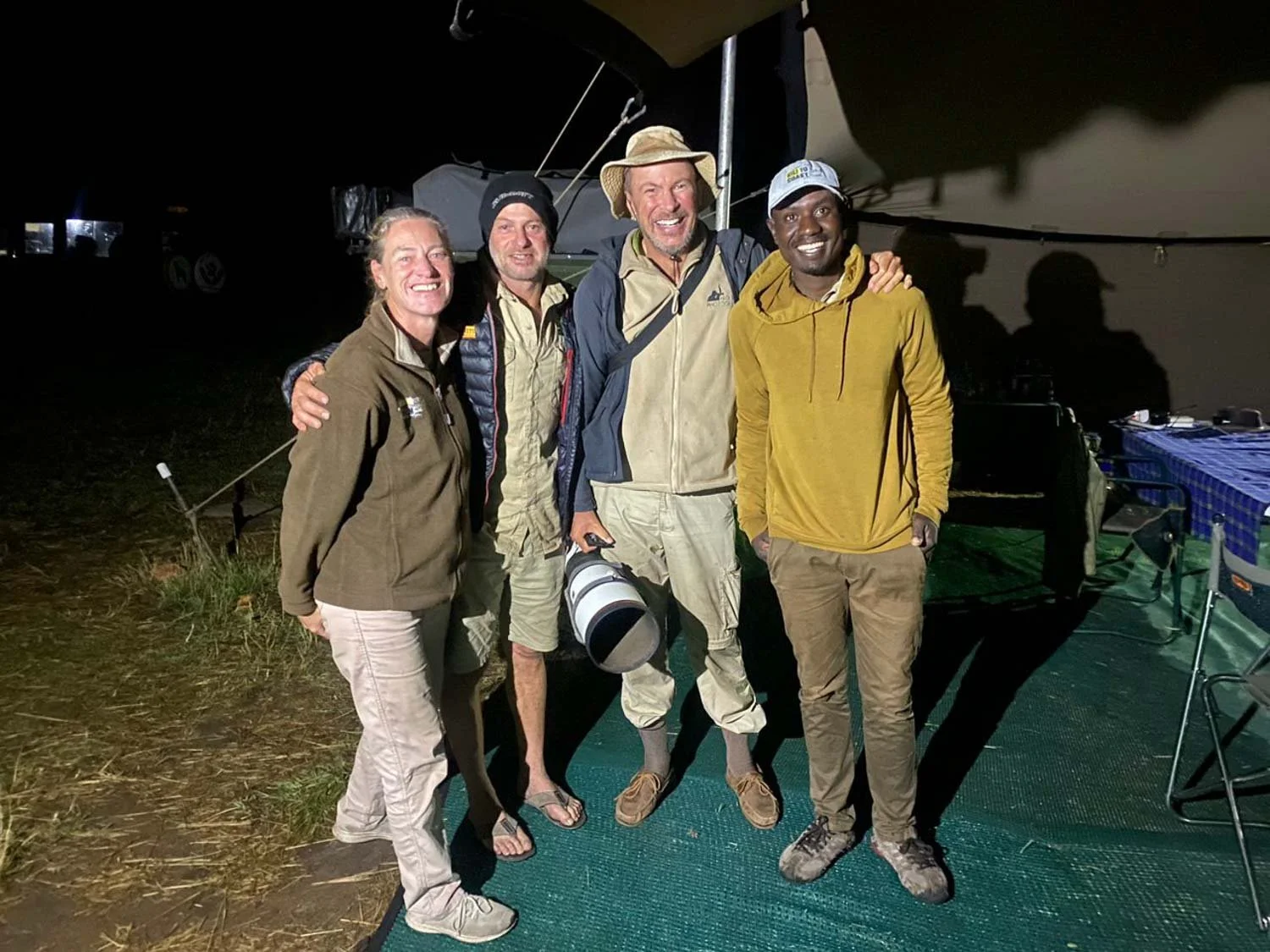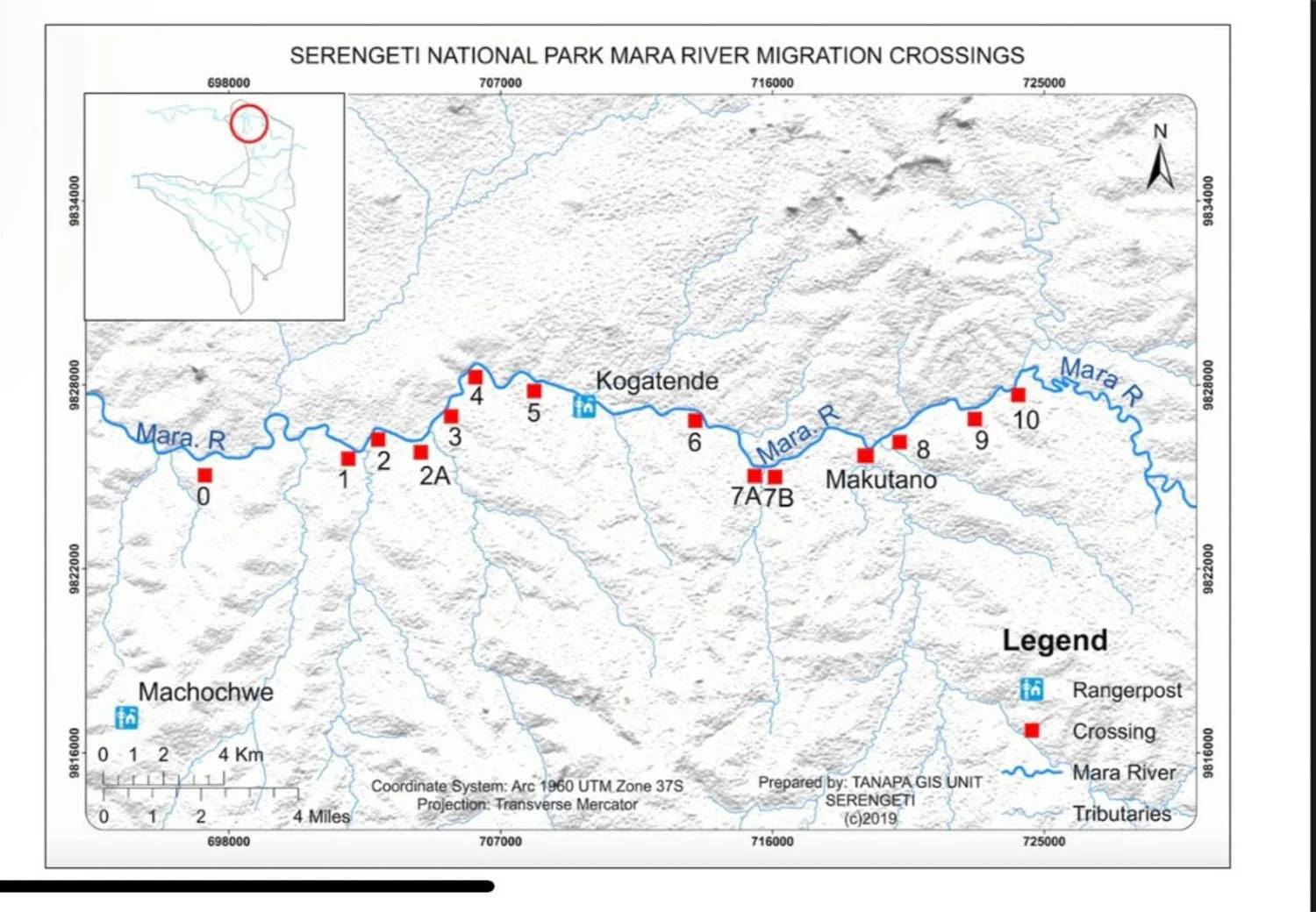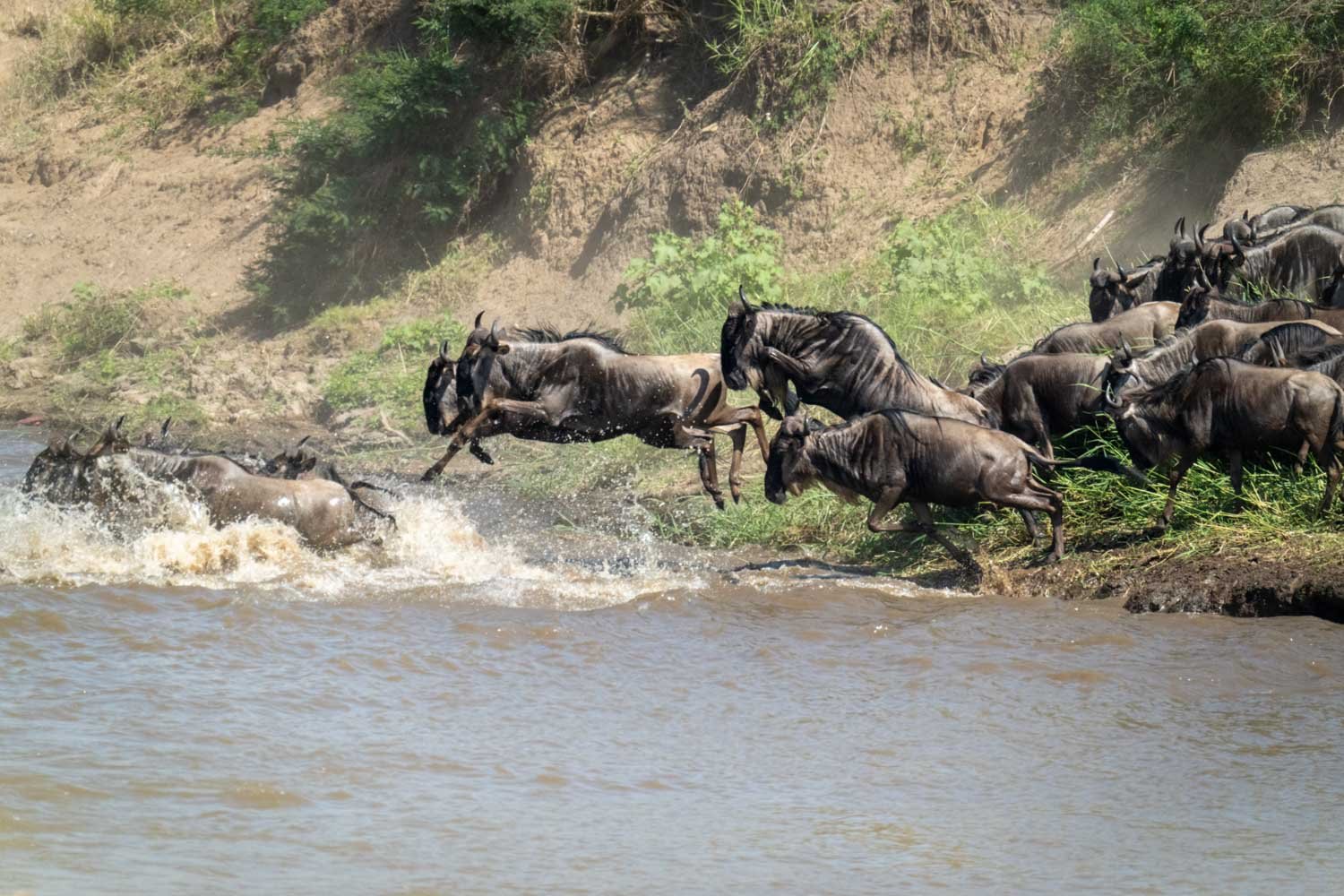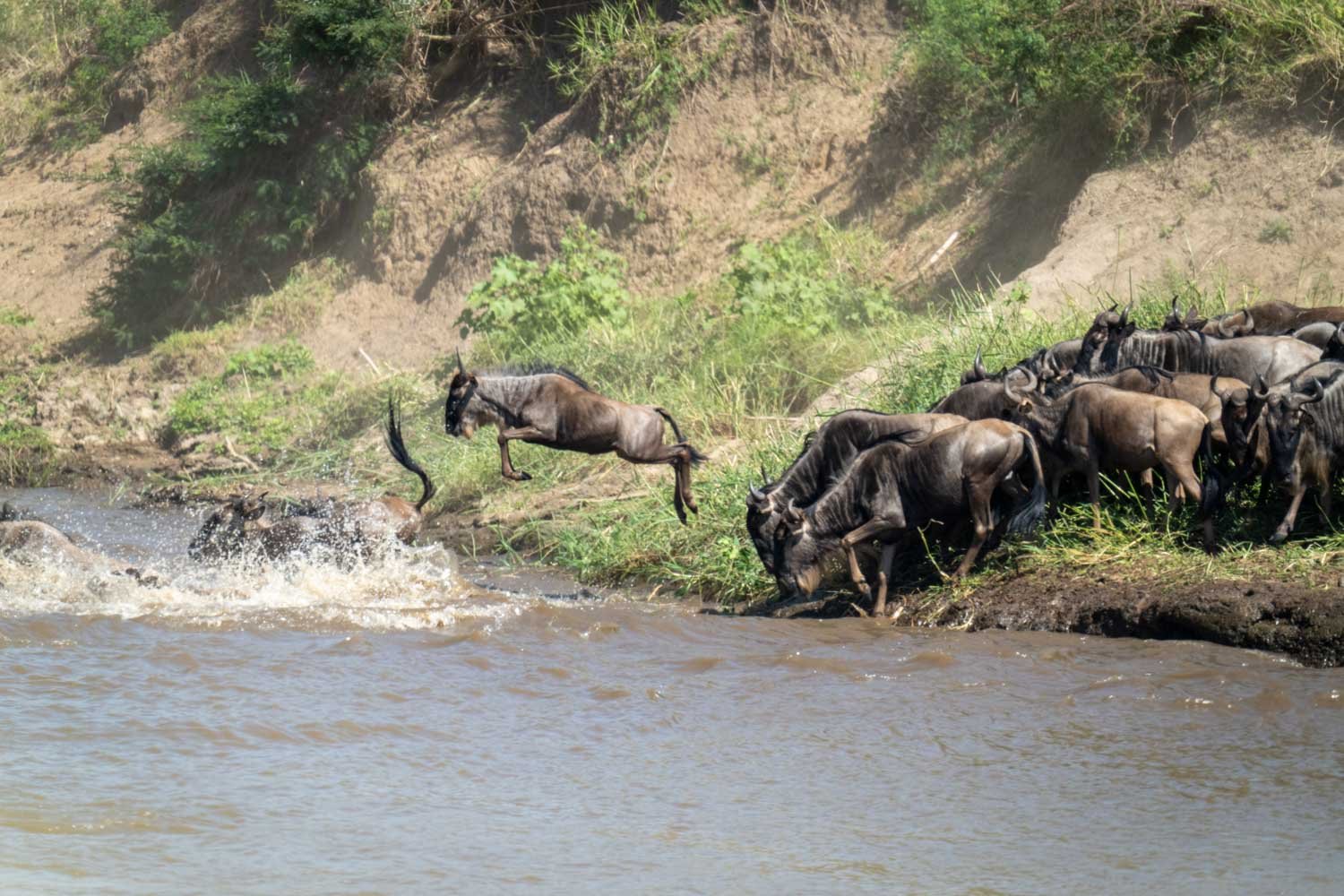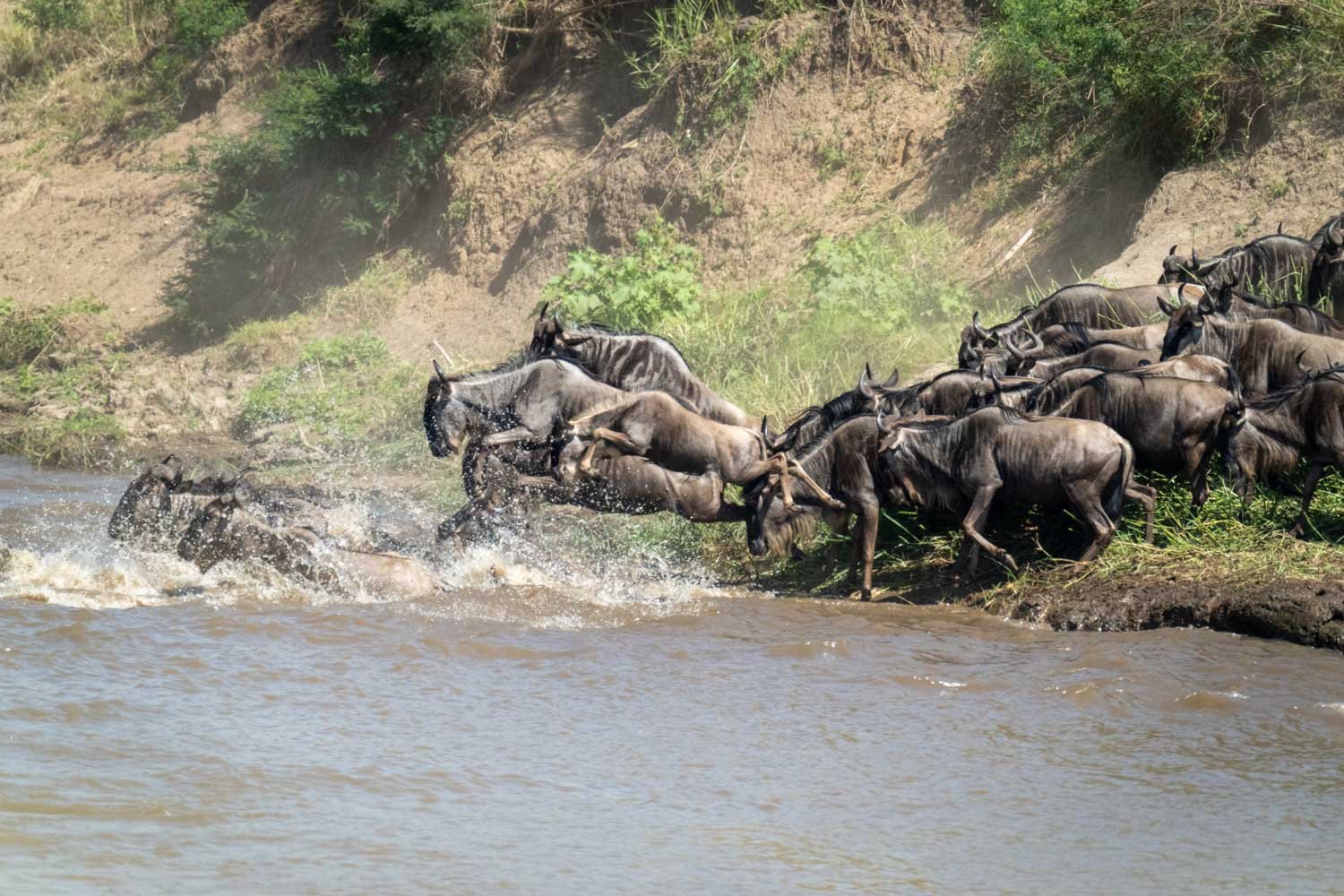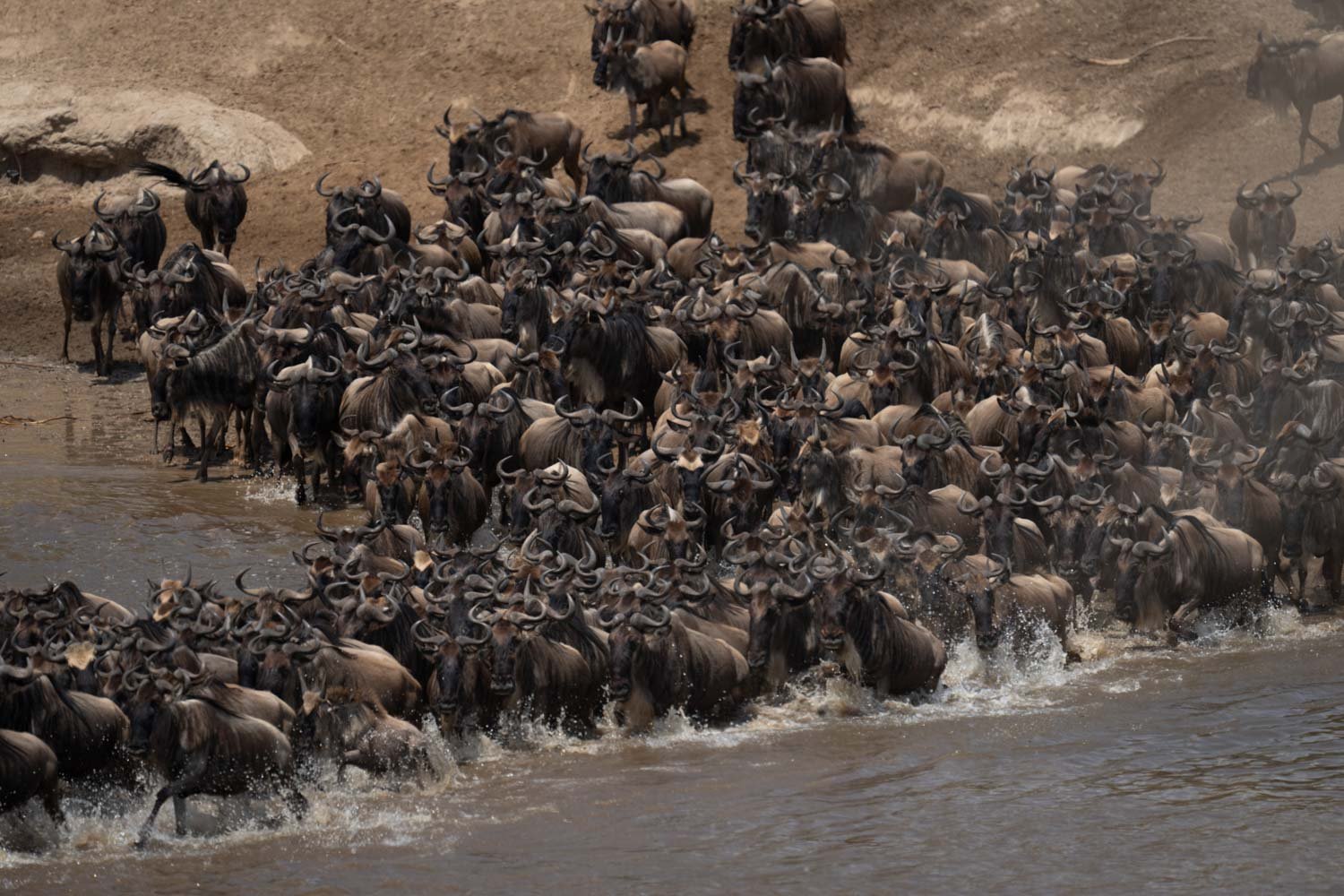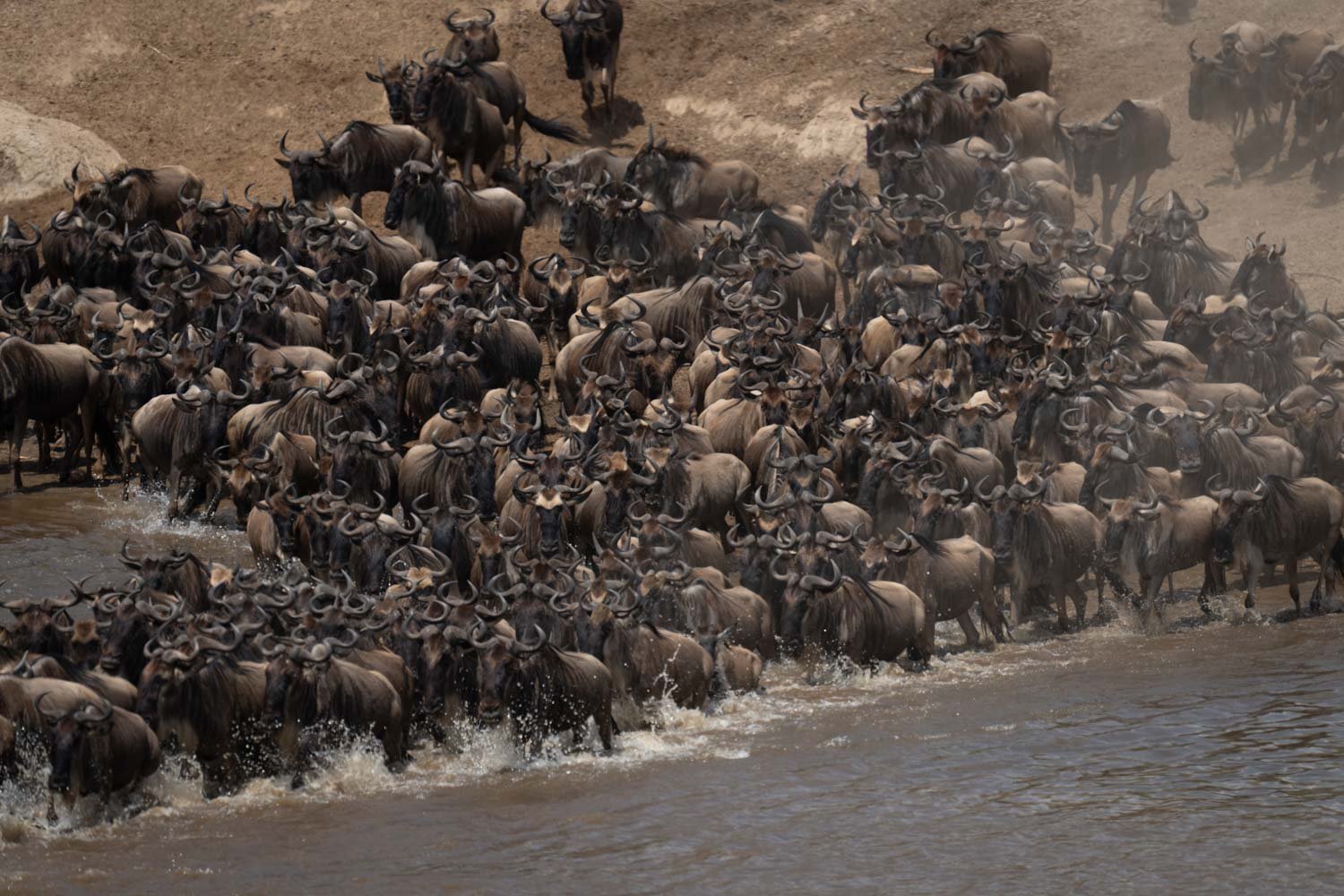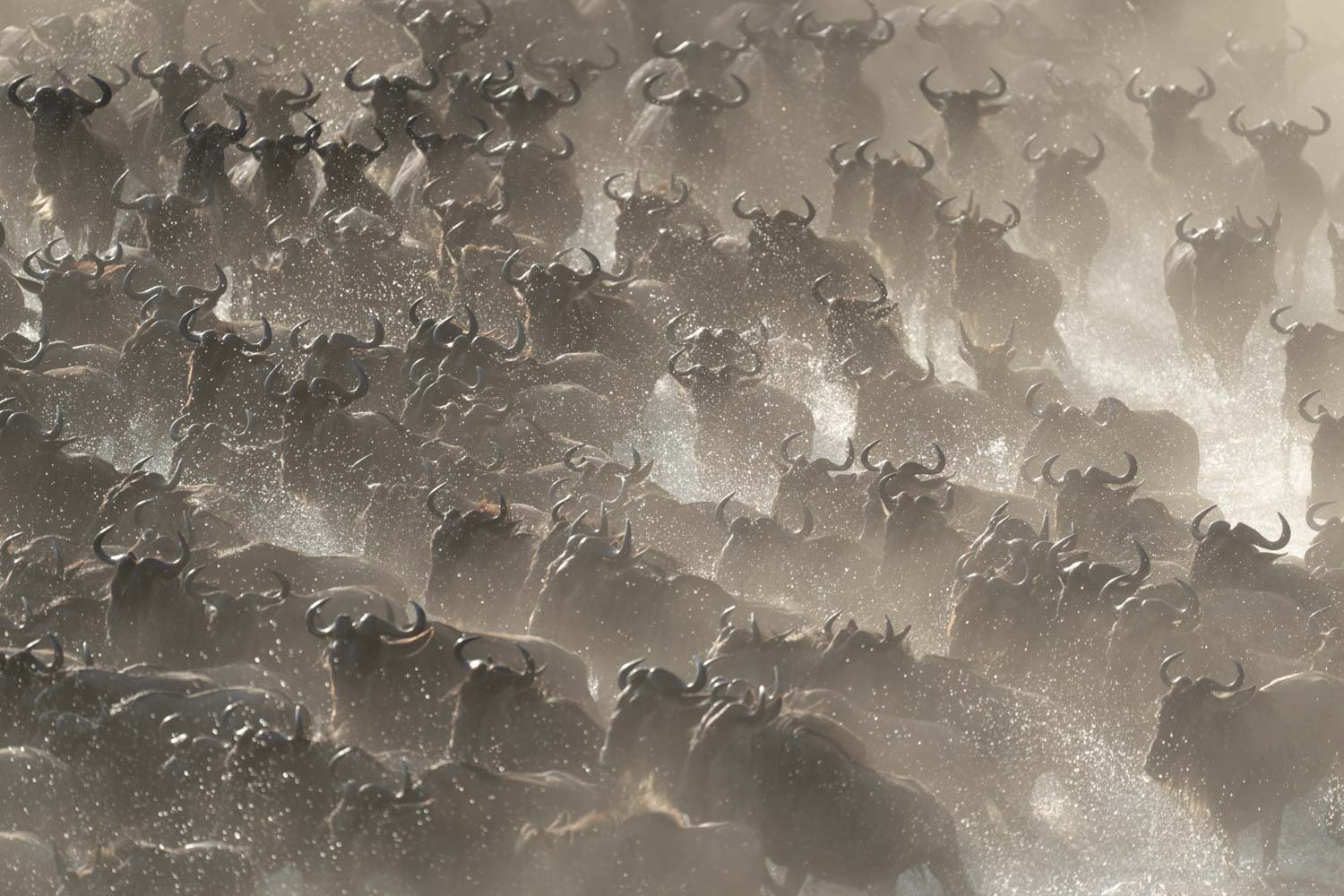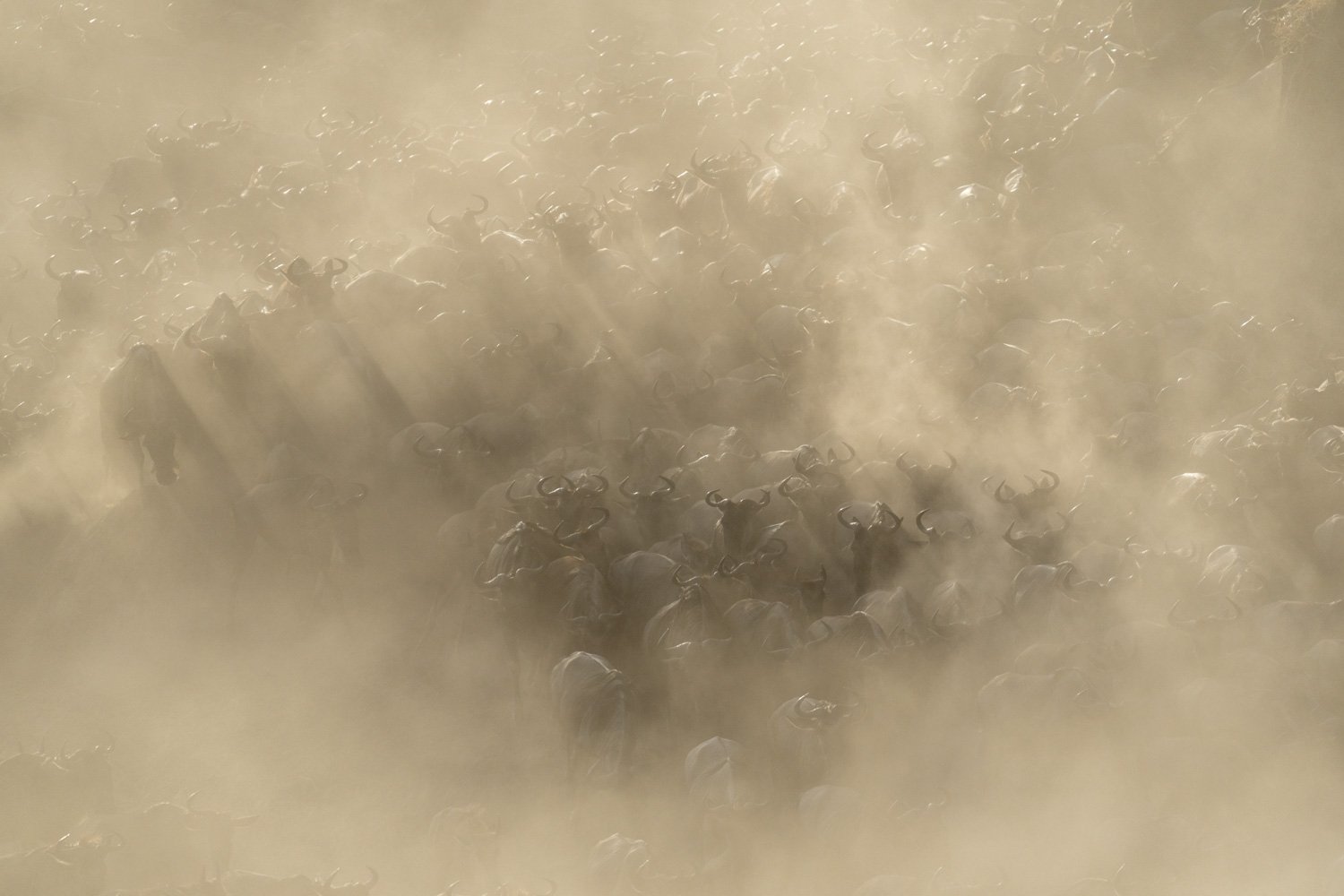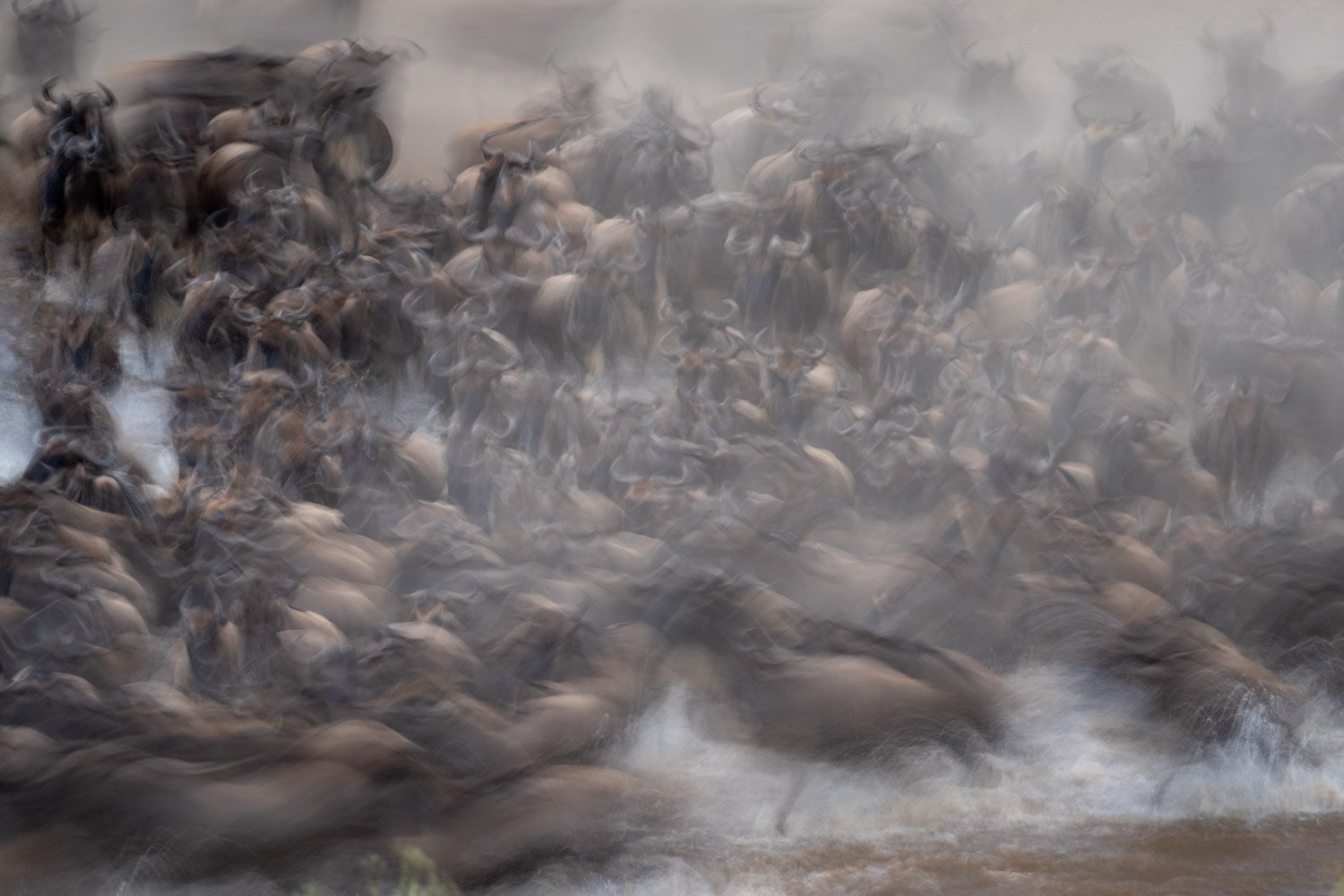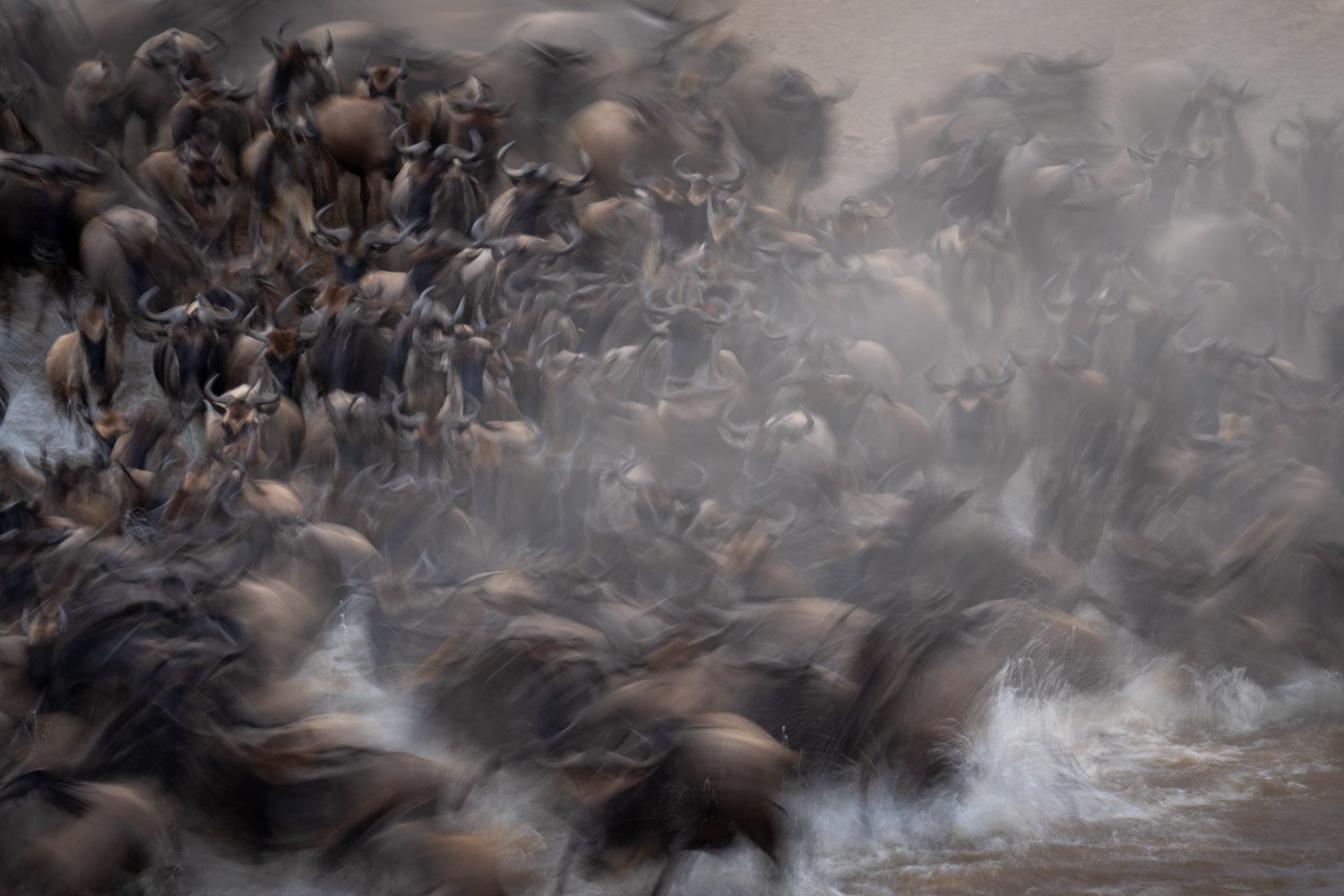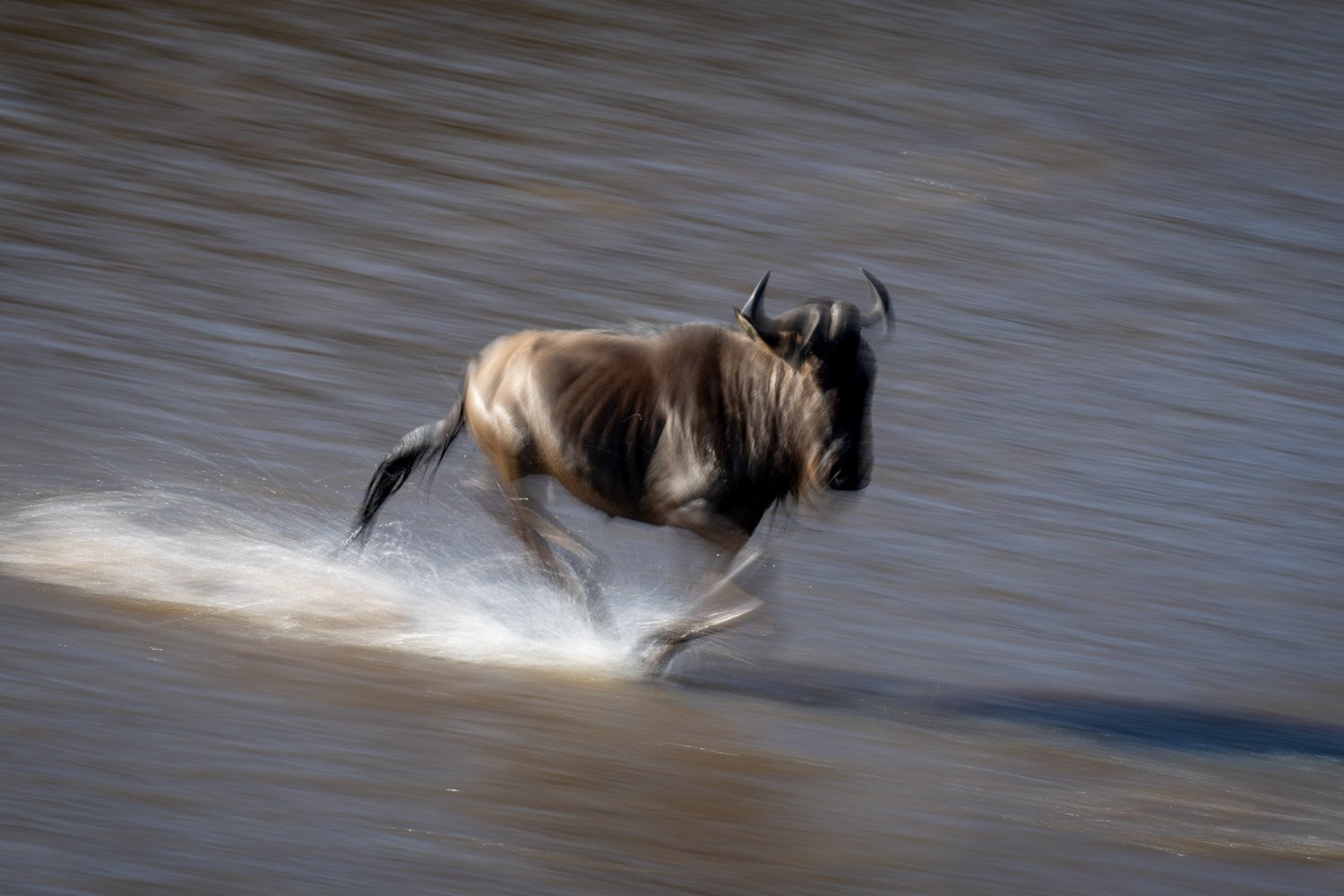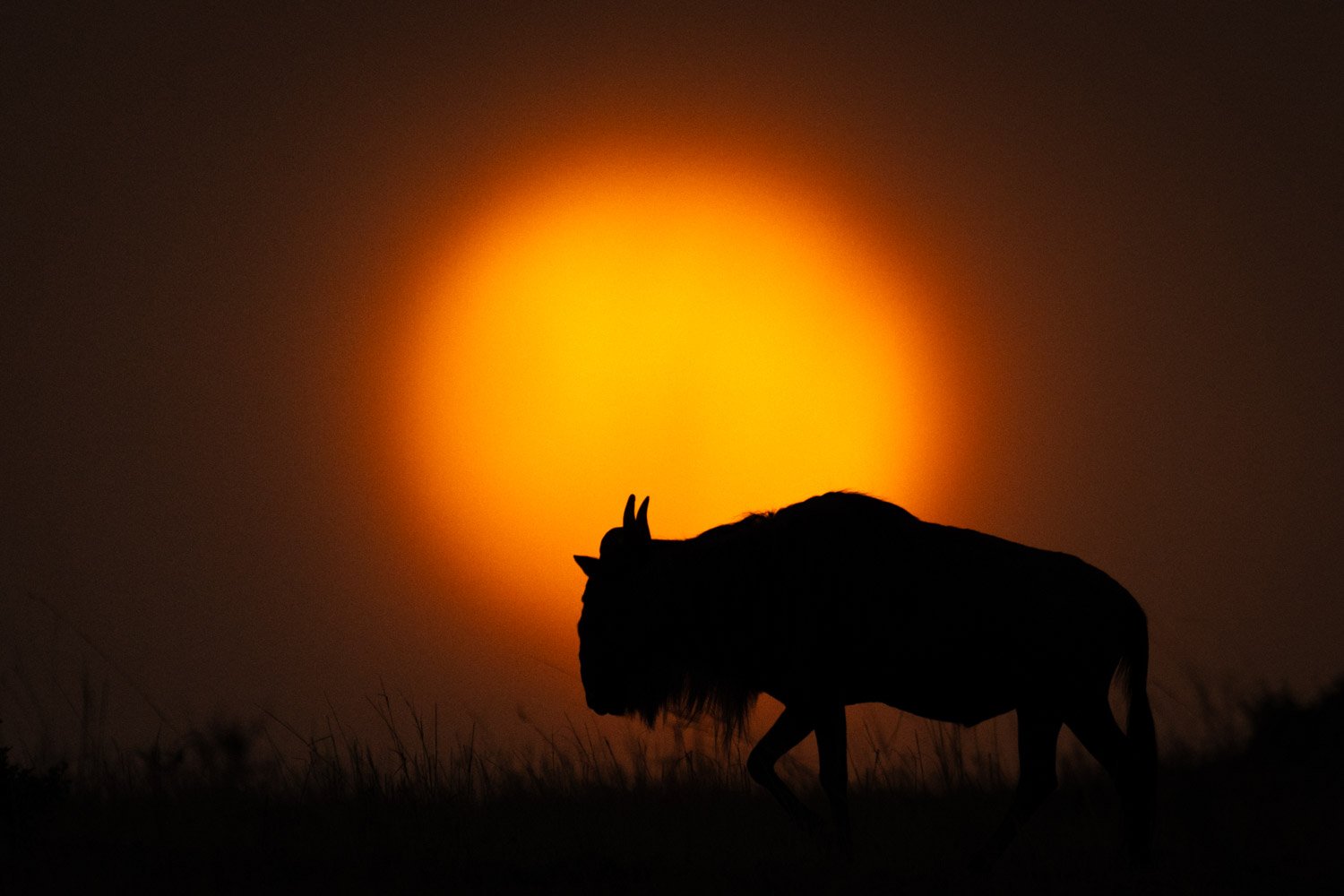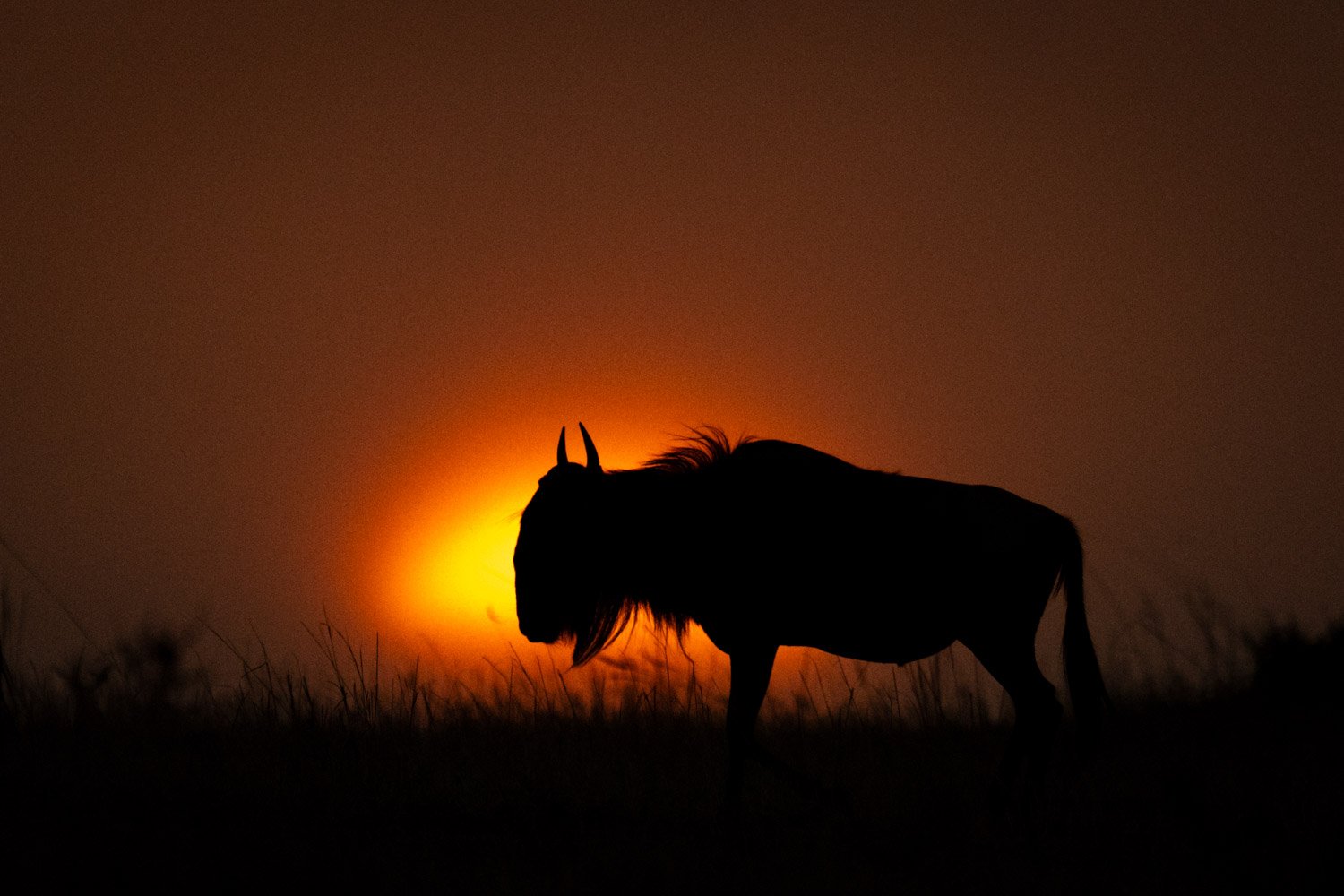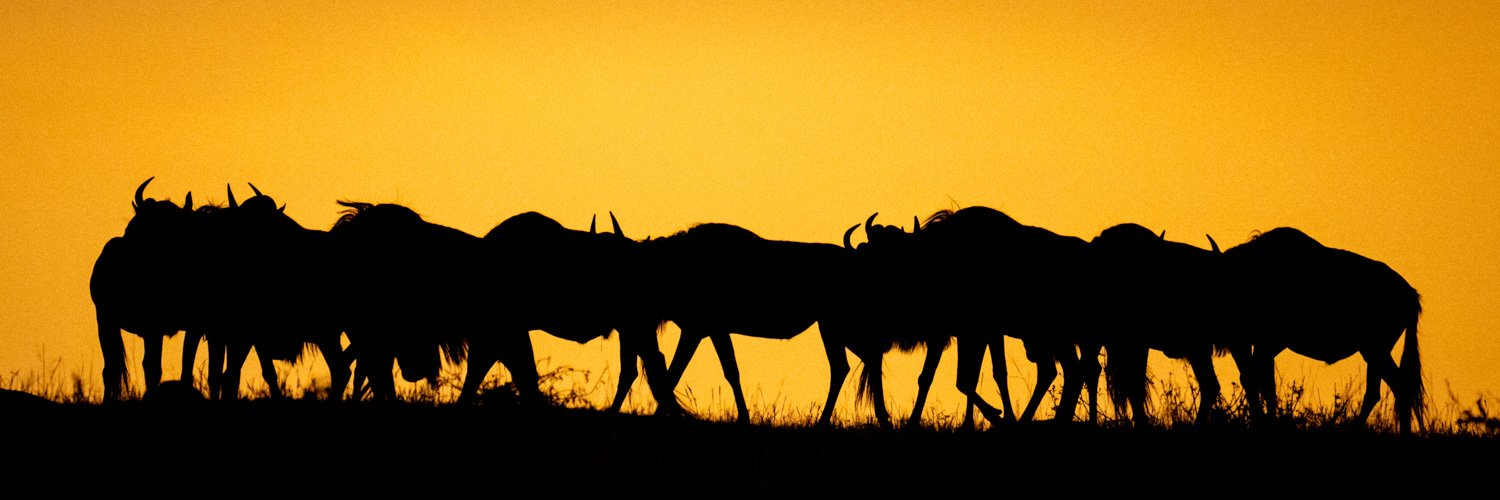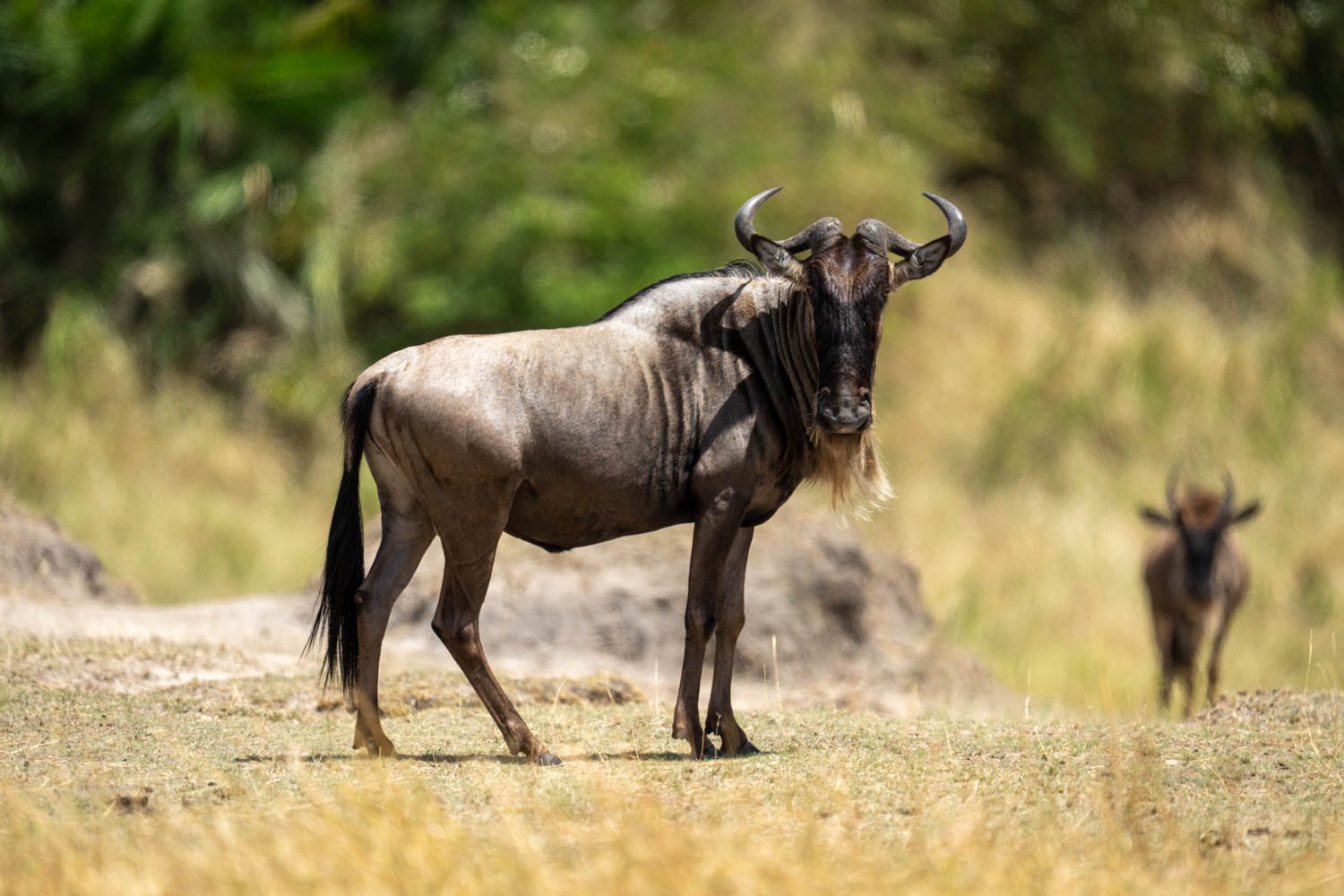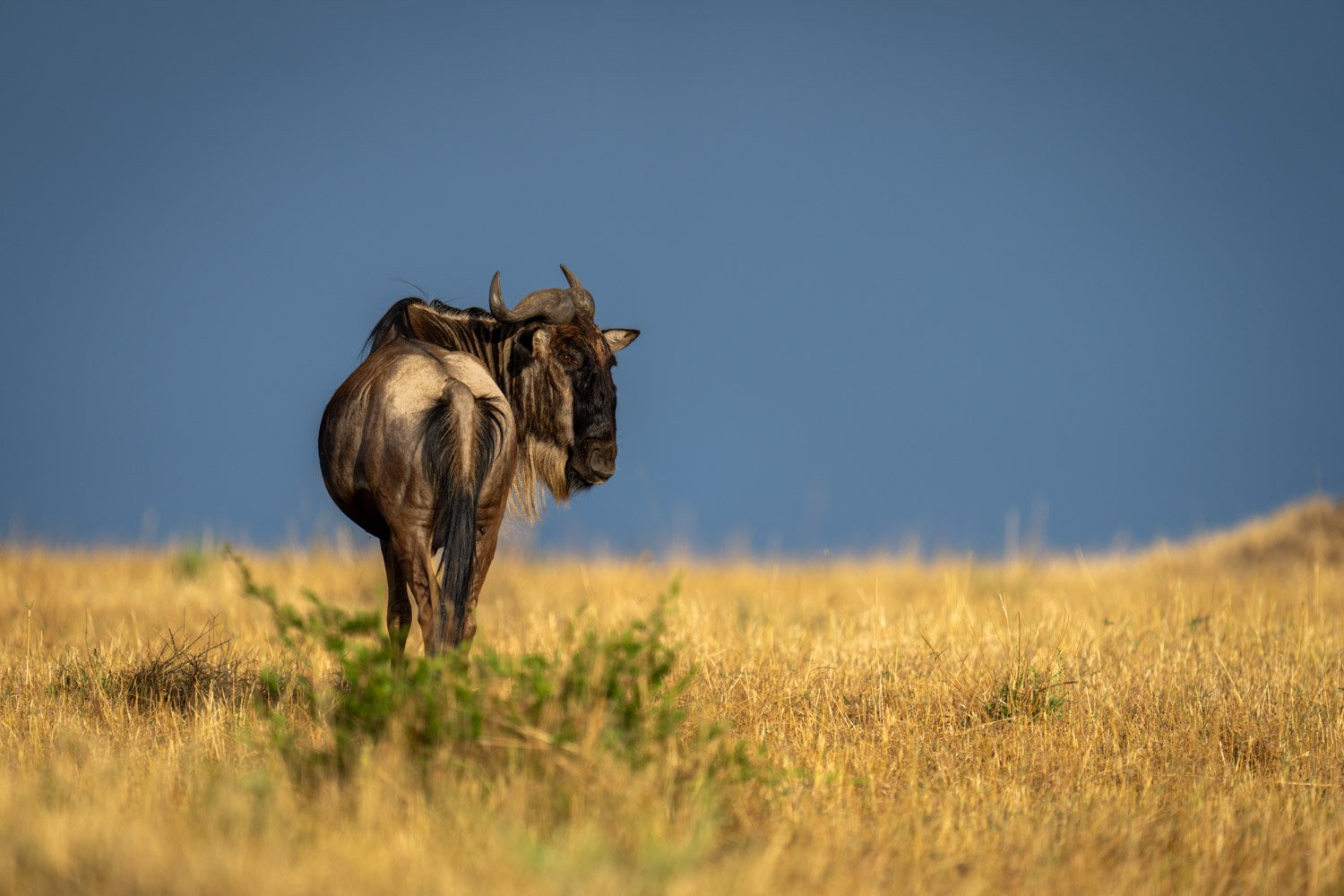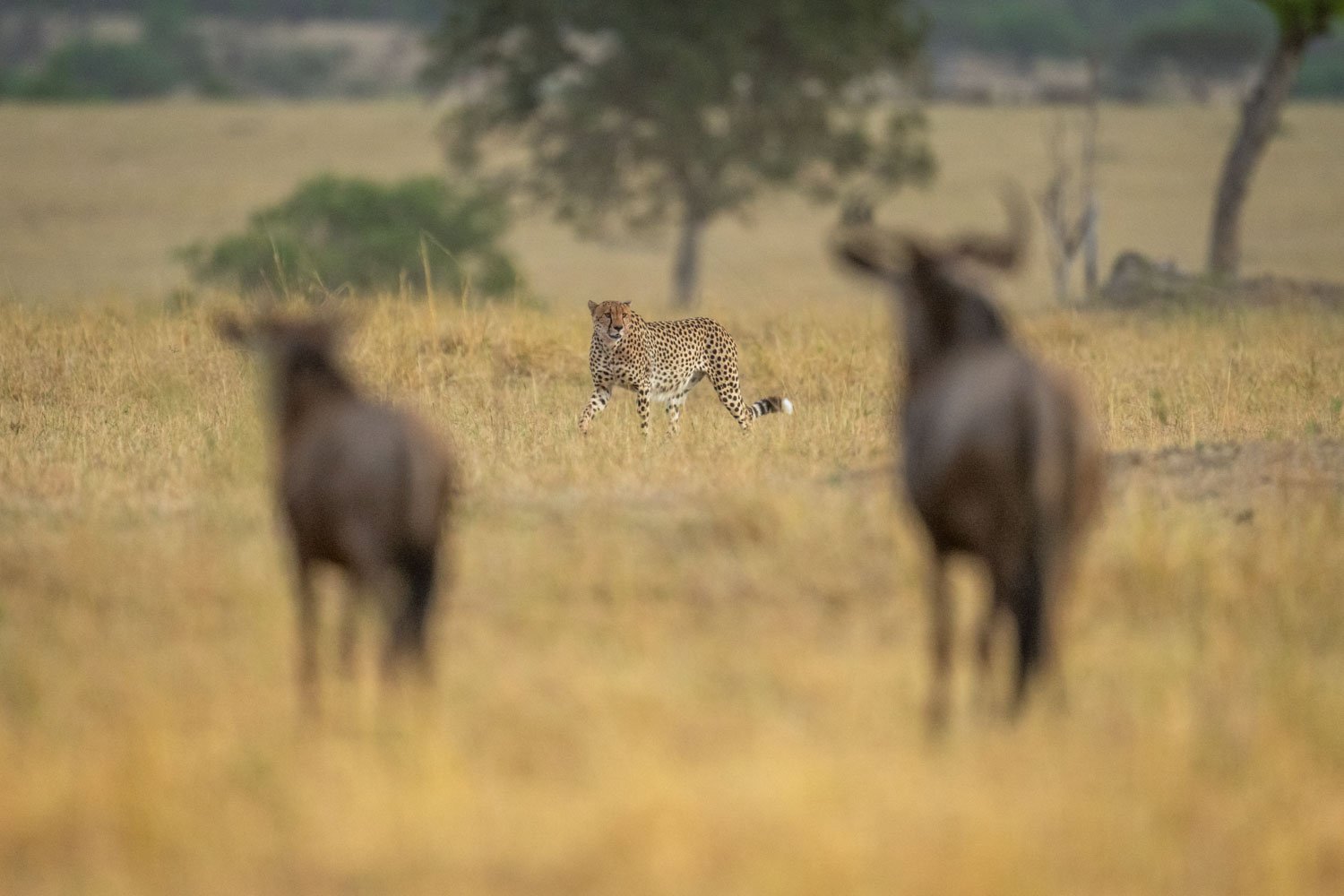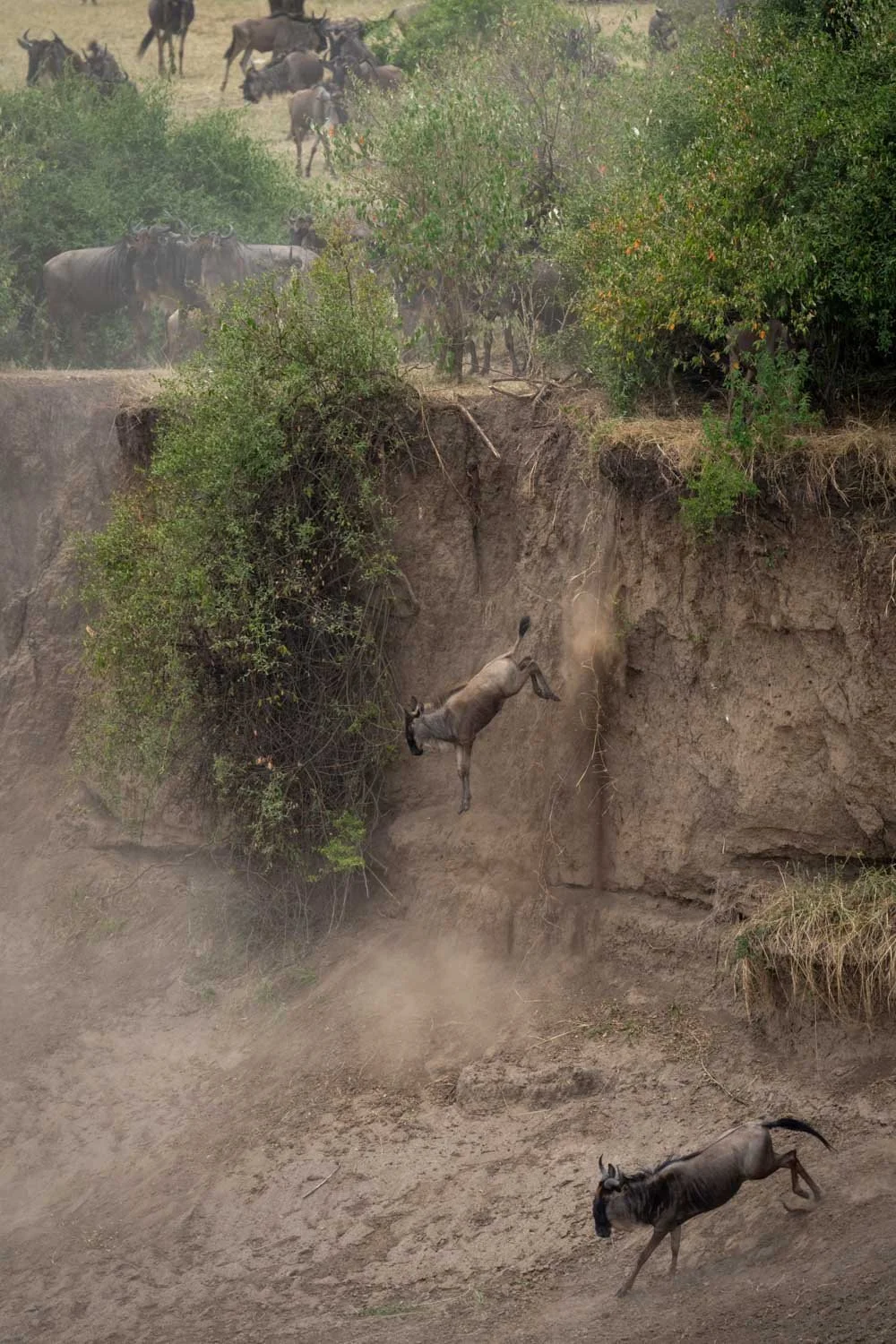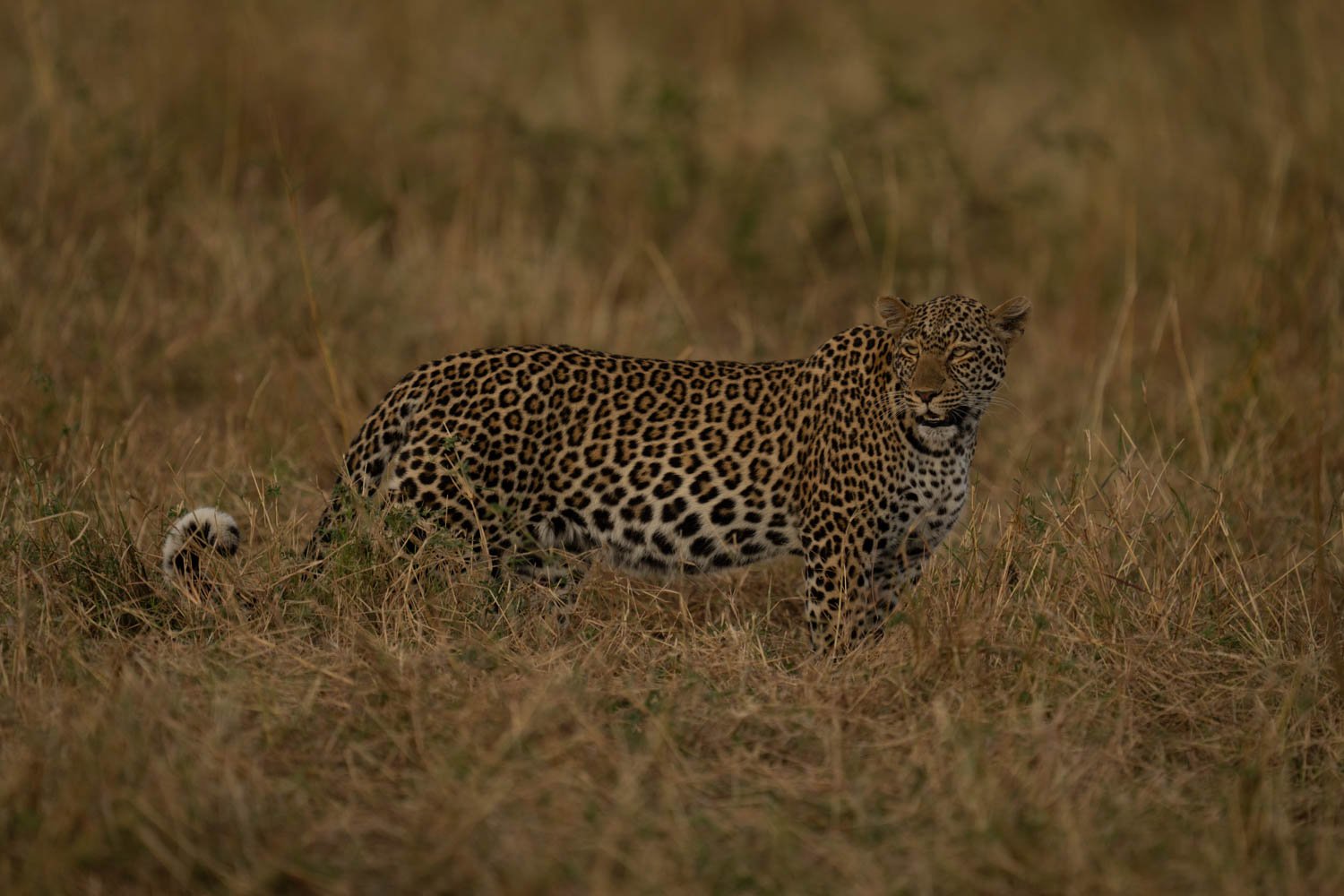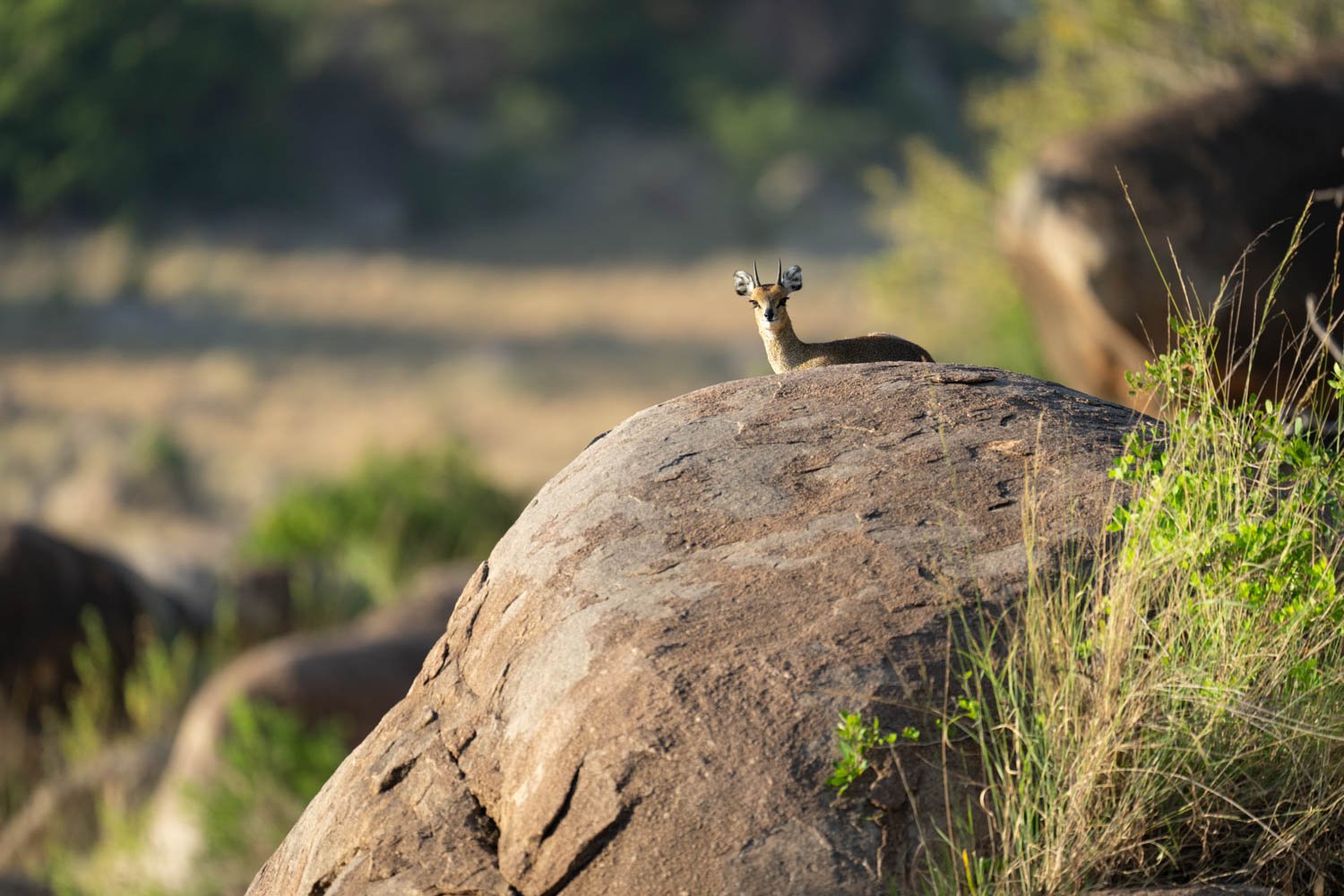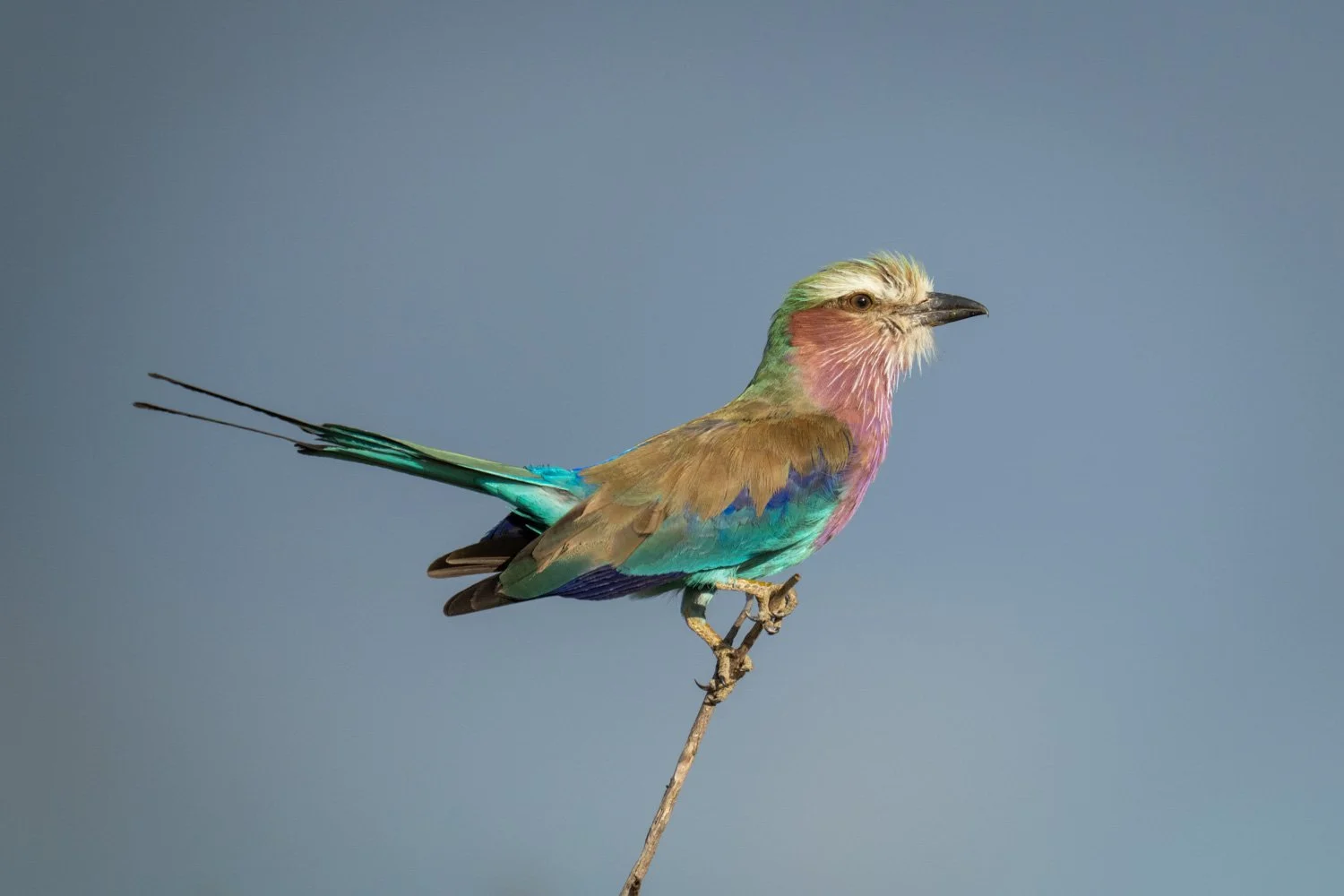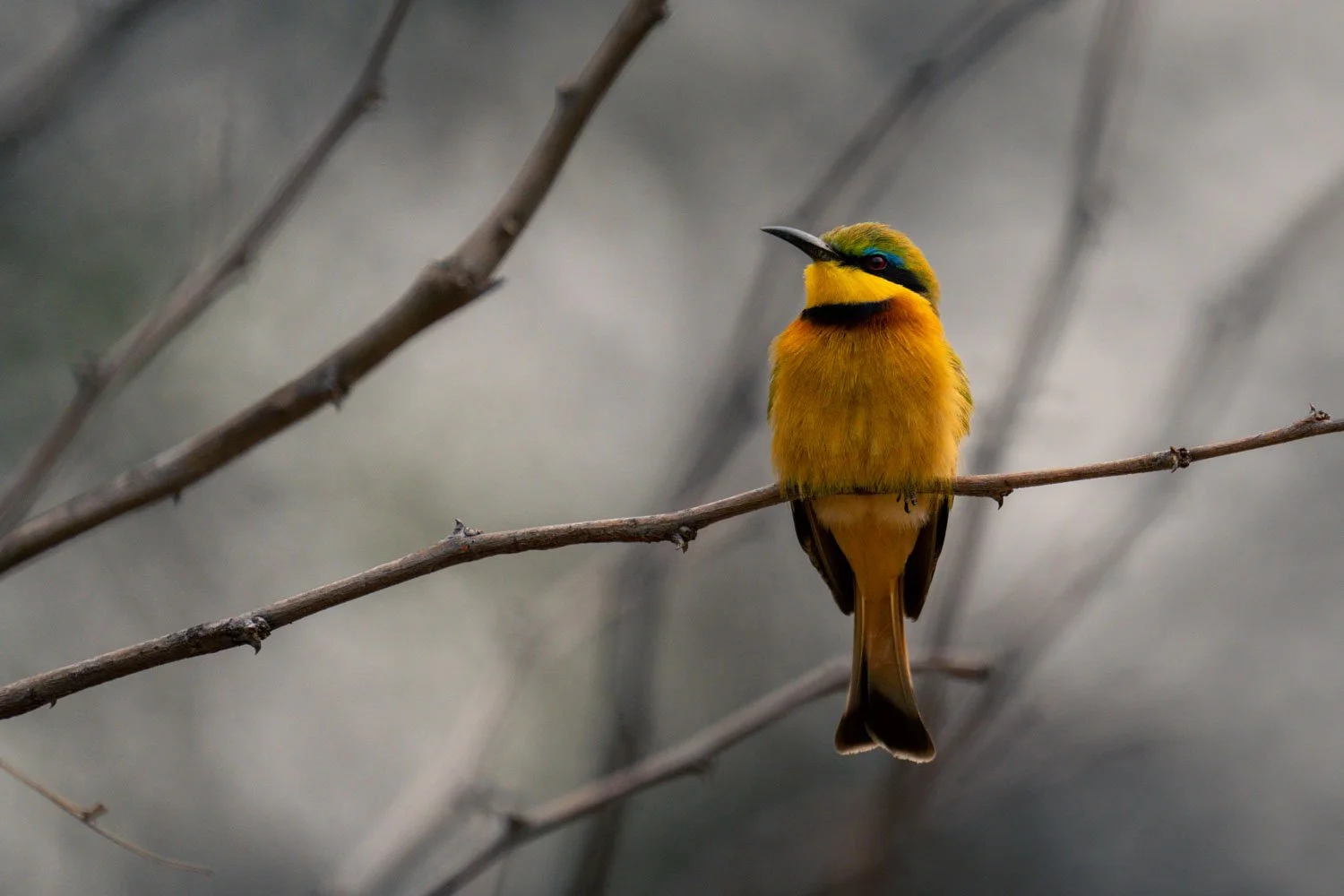Mara River Crossing
And still they come…
A confusion of wildebeest crossing the Mara river
Beautiful women, power cuts, cold water, wildebeest, rain, laughter, one business class seat and 78,000 photos. That’s what I got when I went to see the Mara river crossing in the Serengeti National Park!
Introduction
I was supposed to be going to Muchenje Safari Lodge in October, but the owner told me a few weeks ago that they were full up! That meant I needed to book something else, and I decided on the Mara river crossing.
This is one of those bucket list items for wildlife photographers. Every year, 1-2.5 million blue wildebeest and 200,000-800,000 plains zebras (depending on whom you believe!) make a 300-mile loop through Tanzania and Kenya called the Great Migration (see map).
They follow the rain, which means fresh grass, and the schedule is the same every year. The wildebeest calve in January/February in the south of Serengeti National Park in Tanzania near Ndutu, and they generally make their way up to the Mara river on the border of Tanzania and Kenya by August/September.
There are two problems with booking a trip to see the river crossing. The first is that it gets very busy, with up to 50 vehicles crowding around a single crossing point. That can be very annoying if there are a lot of loud (usually American) tourists taking the best spots and giving a running commentary while I’m trying to take a video…!
The second is that wildebeest are very indecisive. After making their way to the water’s edge, it takes them an age to decide to cross the river. If a herd of wildebeest and a glacier had a race, I’m honestly not sure which would get to the finish line first…!
The unpredictable timing of the river crossings makes it hard to know when to visit. I’d previously tried a couple of times to see them, but on both occasions the wildebeest couldn’t make up their minds…
I asked Sally Grierson from Great Migration Camps (aka Conservation Through Tourism) to help me out, and she advised me to stay at her mobile camp for a couple of weeks in late August and early September—and she was spot on! We had crossings galore to enjoy, and we even had regular sightings of cheetahs, leopards and lions.
Travel
Getting to the Serengeti is not easy. I had to fly from London to Nairobi (where there was a power cut that killed all the lights and escalators!), then Nairobi to Kilimanjaro, stay overnight at the Mount Meru Game Lodge in Arusha and then catch an early flight to Kogatende airstrip. The whole journey took 43 hours door-to-door—plus the transfer to the camp!
The other problem was that I was supposed to be flying out business class, but Kenya Airways overbooked the plane! I’d paid £550 for the privilege, but I was the last ‘winner’ of the auction, so I had to settle for coach. To be fair, they did give me an emergency exit seat with extra legroom and gave me a business class seat on the flight home, but I was still disappointed.
I did manage to worm my way into the business class lounge at Heathrow, though, and that was well worth it. The food and drink weren’t up to much in Terminal 4, but I sat opposite a gorgeous American brunette in a little black dress.
She had a ring on her finger, and she was with her fiancé, but I had to say something, so I caught her arm as she left.
“Thank you for helping me start my journey off well.”
“I didn’t do anything.”
“You didn’t have to DO anything…!”
She smiled and said it was very sweet of me.
Accommodation
I’d negotiated a barter deal with Mount Meru Game Lodge that allowed me to stay one night for free in exchange for taking pictures of the staff, the food, the wildlife and the lodge itself. That meant I had to spend a few hours taking pictures when I first arrived, but that was no hardship.
One of the managers, Kim, helped out by letting me into the rooms and telling me what she wanted, so it was fairly easy to tick off all the items on my list. She also gave me a couple of USB sticks, but neither of them fit into the USB-C ports on my laptop, so I had to send everything by WeTransfer in the end.
Once I arrived in the Serengeti, I was met by my driver, Zeb, and he drove me back to the mobile camp after an afternoon game drive. There, I met Carel and Sally, and they gave me a brief orientation.
There was a big tent complex in the main area with access to electricity and Wi-Fi, and I had a table to myself to store my laptop and camera bag. I had my breakfast and dinner in the communal dining tent with Carel and Sally and any other guests who happened to be in camp.
Sally showed me to my tent. It was quite small and only had a camp bed, cushion, blanket and a sleeping bag in it, but that wasn’t a problem. I was there for the wildlife, not the accommodation…!
People
When I arrived at the camp, there were no other guests, so I mostly talked to Carel, Sally and Zeb. They were all very friendly and helpful, so I immediately felt right at home. On my all-day game drives, the distances were vast, so Zeb often had to spend an hour or two driving me to our destination. We sat in silence most of the time, but we still had a laugh together when we could.
Sally, Carel, Nick and Zeb
After a couple of days, a couple of other guests arrived. Dave was Irish but lived in the Isle of Man. John was an Australian who had a farm in New South Wales and worked for a mining company. He was a good laugh, so we spent a lot of time kidding around on our game drives. Dave was usually in the front seat, so we didn’t have a chance to talk to him as much, but he seemed happy enough.
After another couple of days, an American couple from Seattle arrived called John and Marta. It was their first time in Africa, so John and I helped them settle in, and I gave John a few tips on photography.
Routine
Every day, we went on an all-day game drive that started at 0530 and finished around 1900. That might seem like a long time, but I was quite happy reading or sleeping in the middle seat whenever there weren’t any animals or birds to photograph.
Generally speaking, I was quite happy to read the paper on my phone in the mornings and then listen to audiobooks when I wasn’t taking pictures. I’d started reading the Hornblower novels by CS Forester, and I eventually managed to get through half a dozen of them in two weeks!
I also chatted to all the other guests in the vehicle, and we had a lot of laughs. I always meet great people on safari, and this trip was no exception.
We generally started off going to a spot Zeb recommended to try and get a few silhouette shots at sunrise. It worked out well on a few occasions, but there were a few days when it was too overcast or there wasn’t any wildlife around. We also tried a couple of other locations, but they weren’t as good.
After that, we usually went down to one of the crossing points on the river. There were 14 of them, and they were all different in their own way. Some could be viewed from both sides of the river and some from only the north or south bank. There were also lots of rules about how close to the river you could park your jeep, and it got pretty crowded sometimes.
Crossing points on the Mara river
Fortunately, I was lucky to see at least one crossing every day, and I made sure I took plenty of video as well as stills. Aussie John even lent me his Røde microphone to reduce wind noise, and I paid him back by lending him my lens cloth.
In the afternoons, we generally went further afield to try and spot a few cats, and we were generally pretty lucky in seeing cheetahs, lions and even leopards, plus elephants, Cape buffalo and various birds, including the lilac-breasted roller and little bee-eater.
Towards the end of the trip, I’d ticked off all the items on my shot list, so I decided to focus exclusively on the cats for the last four days. I still went to our usual sunrise spot to take a few silhouette shots every morning, but I didn’t even bother going to one of the crossing points. I just headed off in search of the cats.
My main goal was to see and capture a cheetah kill, but it never happened. We did see cheetahs, and a couple of them even chased a few blue wildebeest. However, they were far too half-hearted, so my wish didn’t come true, unfortunately.
After the daily game drive (plus the welcome drink and hot towel!), I developed my own evening routine. I’d copy all the images on my memory cards to my laptop and rate them while sipping a gin and tonic.
I’d then join the other guests for dinner at around 1900. Normally, I put on quite a bit of weight during a safari, but I was determined not to do that this time. Instead, I warned Sally in advance that I wanted to match my routine at home, which meant I probably wouldn’t be eating dinner most nights.
In London, I get up around 0530, drink a mango lassi and have an early lunch about 1100. After that, I don’t eat again until the following morning. I know that sounds a bit weird, but it’s partly related to the fact that I’m a morning person, so everything gets brought forward.
As it turned out, I usually had some fruit and fruit juice or a yogurt for breakfast and whatever Zeb packed for lunch. This was usually a samosa or meat pie with various salads and either biscuits or an apple for dessert. In the evenings, I’d listen to the menu and then maybe have one course—the one I most liked the sound of.
After dinner, everyone would usually go back to their tents around 2100, but I’d spend another hour or so working on my photos before taking a bush shower and going to bed.
Wildlife
I saw 36 different species of animals and at least 58 different kinds of birds. I asked Zeb to let me know the names of any birds we saw, but he didn’t do that for some reason (!), so I’m sure I saw plenty more than the ones listed below.
However, my main goal was to see the blue wildebeest and zebras cross the Mara river, and I was delighted to get so many chances to do that. I even saw crocodiles grab zebras and wildebeests on a couple of occasions, but they were too far away to allow me to take decent pictures.
The usual routine was that Zeb would hear something on the radio from the other drivers. He’d then take up a position somewhere near the river and watch the wildebeest to see which crossing point they were heading for.
He’d then drive to that crossing point and park in the shade so that we could wait for the action to start. It sometimes took more than an hour for the wildebeest to make up their minds.
They’d gather on the riverbank, milling around and coming and going very unpredictably. After that, a few zebra or wildebeest would go down to the river and have a drink.
“It’s all right,” they seemed to be saying. “We’re just having a drink. We’re not crossing the river. Don’t worry…”
However, the crossing would usually start soon after that. One animal would eventually lead the way, and then thousands of others would follow.
That would be the signal for dozens of jeeps to drive closer to the river, jostling for position and occasionally obstructing our view of the water.
The crossings varied in size, but they usually lasted around 10-20 minutes. The animals normally crossed in single file, but we did see one enormous crossing in which the animals went across 20 or 30 abreast!
Here’s a short video to get you in the mood…
And here’s another one of a crocodile hanging on to a blue wildebeest!
Blue Wildebeest
Most of my images of the blue wildebeest are actually ‘crowd shots’ I took during a crossing.
However, I did take a few portraits. These were generally silhouettes at sunrise or sunset or panning shots of lone wildebeest crossing the river—taken either at 1/1000 of a second or a much slower shutter speed—usually 1/5 s.
The last item on my shot list that I managed to tick off was an image of a wildebeest jumping off a cliff! It didn’t happen during the first few crossings, but then I happened to see it during the massive crossing when the American tourists in a nearby jeep started oohing and aahing.
Unfortunately, I was too busy taking a video to be able to capture it, but I managed to during the next crossing. I actually have a series showing the whole drop from top to bottom, but here’s the best frame.
Blue wildebeest jumps off cliff near another
Predators
We saw lions, leopards, cheetahs and hyenas every day—and sometimes all three! Some of the sightings weren’t great, though, and it was obviously a shame that we didn’t actually see a kill or even a proper hunt.
Other Prey Animals
As well as the blue wildebeest, we saw plenty of other prey animals, including the African bush elephant, common hippopotamus, Masai giraffe, defassa waterbuck, plains zebra, Thomson’s gazelle and klipspringer.
Birds
I’m a sucker for any kind of predator, and that includes birds of prey. We saw plenty of those, including martial, tawny, long-crested, bateleur, Wahlberg’s eagles and augur buzzards.
There were also a few other major bird species, including the common ostrich, the white-backed, lappet-faced and Rüppell’s vultures and two of my all-time favourites: the lilac-breasted roller and the little bee-eater.
I love to take pictures of birds taking off, and the lilac-breasted roller and little bee-eater are great for that kind of shot as you can show off the colours of the feathers on their wings
Silhouettes
Sunrise was a great time to capture colour in the sky, and I’m glad I managed to get a few silhouettes of different animals and birds.
Verdict
All in all, I had a very enjoyable trip. I only took a couple of five-star images, but I did what I set out to do, which was to take pictures and video of the Mara river crossing. It was a shame I didn’t see a ‘proper’ kill, but as someone once wisely said, “Don't let's ask for the Moon, We have the stars”…!
There was also an unexpected bonus. Carel and Sally invited me to come back and lead one or two photographic workshops next year, either at the same time of year for the river crossing or in January/February for the calving season, which is a good time to try and spot cheetah kills.
Watch this space…
Butcher’s Bill
I didn’t lose or damage any of my photographic equipment, but I did break the zip on my ‘super jacket’, so I’ll have to find a replacement somewhere. It needs to have a pocket that goes all the way round the body, though, and that’s hard to find.
I ended up with a scraggly beard, short, dirty fingernails, peeling, sunburnt skin and a big rip in the seat of my trousers, and one of my socks was inside out!
Species Lists
I always try to list the animals and birds that I see on safari. Here are the two lists from this trip.
Animals
African bush elephant
Agama lizard
Banded mongoose
Bat-eared fox
Black-backed jackal
Black-necked spitting cobra
Blue wildebeest
Cape buffalo
Cheetah
Coke’s hartebeest
Common eland
Common impala
Common warthog
Defassa waterbuck
Dwarf mongoose
Grant’s gazelle
Hippopotamus
Kirk’s dik-dik
Klipspringer
Leopard
Lion
Masai giraffe
Monitor lizard
Nike crocodile
Olive baboon
Oribi
Plains zebra
Reedbuck
Rock hyrax
Scrub hare
Senegal coucal
Spotted hyena
Thomson’s gazelle
Topi
Tree hyrax
Vervet monkey
Water buffalo
Birds
African fish eagle
African hoopoe
African pygmy-kingfisher
African sacred ibis
Augur buzzard
Bare-faced go-away-bird
Bateleur
Black-chested snake-eagle
Black-headed heron
Blacksmith plover
Brown snake-eagle
Cattle egret
Common ostrich
Crowned lapwing
Dark chanting-goshawk
Egyptian goose
Flapper lark
Great egret
Grey crowned crane
Grey heron
Grey-backed fiscal
Grey-headed kingfisher
Griffon vulture
Hadada ibis
Hamerkop
Helmeted guineafowl
Hooded vulture
Lappet-faced vulture
Lilac-breasted roller
Little bee-eater
Long-crested eagle
Magpie shrike
Marabou stork
Martial eagle
Meyer’s parrot
Pied kingfisher
Purple starling
Red-necked spurfowl
Ring-necked dove
Rüppell’s vulture
Rüppell’s white-backed vulture
Saddle-billed stork
Secretary bird
Sooty chat
Southern ground hornbill
Spur-winged goose
Superb starling
Tawny eagle
Verreaux’s eagle-owl
Von der Decken’s hornbill
Wahlberg’s eagle
Wattled starling
White-faced duck
White-headed buffalo weaver
Wire-tailed swallow
Yellow-billed oxpecker
Yellow-billed stork
Yellow-throated longclaw
If you’d like to order a framed print of one of my wildlife photographs, please visit the Prints page.
If you’d like to book a lesson or order an online photography course, please visit my Lessons and Courses pages.

